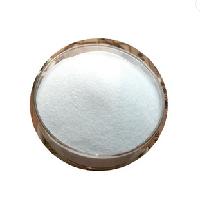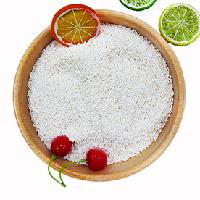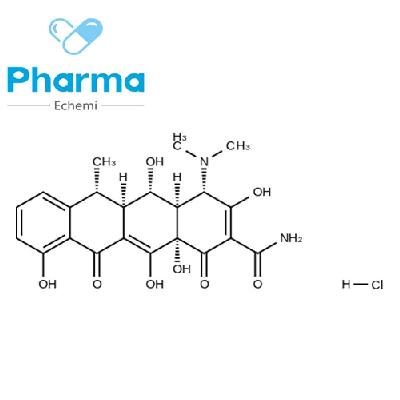-
Categories
-
Pharmaceutical Intermediates
-
Active Pharmaceutical Ingredients
-
Food Additives
- Industrial Coatings
- Agrochemicals
- Dyes and Pigments
- Surfactant
- Flavors and Fragrances
- Chemical Reagents
- Catalyst and Auxiliary
- Natural Products
- Inorganic Chemistry
-
Organic Chemistry
-
Biochemical Engineering
- Analytical Chemistry
-
Cosmetic Ingredient
- Water Treatment Chemical
-
Pharmaceutical Intermediates
Promotion
ECHEMI Mall
Wholesale
Weekly Price
Exhibition
News
-
Trade Service
According to the seventh census, there are 253 million children in China, accounting for 18% of the total population
.
With the country's comprehensive opening of second and third children, the demand for children's medical care has also continued to rise, and the number of consultations has increased by 4 million to 5 million per year, accounting for more than 10% of the total number of outpatient clinics in the country
.
Contrary to the strong demand, the shortage of children's medicines and the lack of research and development motivation of enterprises have become increasingly prominent in the industry
.
It is understood that among the conventional drugs, there are more than 3,600 kinds of prescription drugs for adults, and only more than 60 kinds of special drugs for children
.
In addition, it is also very backward in the research and development of children's medicines.
As of January 1, 2021, China has included a total of 228,448 approval numbers for marketed products, of which the total number of approval numbers for paediatric drugs (by children, paediatrics, paediatrics, etc.
) is 3826, accounting for only 1.
7%
.
In order to solve the shortage of children's medicines, in recent years, the State Food and Drug Administration, the National Health Commission, the National Medical Insurance Administration and other departments have successively introduced a number of policies and measures to encourage the development and production of children's medicines
.
For example, on October 25, 2018, the National Health and Medical Commission issued the "Notice on Printing and Distributing the National Essential Medicines List (2018 Edition)", focusing on revising the categories, varieties, dosage forms and specifications of children's medicines, and adding 22 kinds of medicines for children in urgent clinical need.
Contains 3 pediatric chemicals and 13 proprietary Chinese medicines
.
On August 27, 2019, the National Health and Medical Commission released the "Third Batch of Children's Drug Lists Encouraged for R&D and Application".
There are 37 drugs in the list, including aspirin and metronidazole
.
This list contains more cardiovascular system drugs, sexual development drugs, nervous system drugs and rare disease drugs
.
On September 29, 2021, the State Food and Drug Administration issued an announcement requiring five marketed anti-tumor drug instructions to supplement the information on children's medication
.
In addition, at the end of September, the state also issued the "China Children's Development Outline (2021-2030)" to encourage the research, development and production of children's medicines, and to speed up the application and approval of children's medicines
.
He also proposed to "explore the formulation of a national list of essential medicines for children, and update the list of banned medicines for children in a timely manner.
"
.
Among them, it is worth noting that in August 2020, the State Drug Administration issued the "Technical Guidelines for Real-World Research to Support the Development and Approval of Children's Drugs (Trial)"
.
As a new research method, Real-World-Research/Study (RWR/RWS) has been gradually used to support the research and development and review of children's medicines, for the registration of new medicines, the expansion of children's indications, and the improvement of children's dosage regimens.
etc.
to provide support
.
Pediatric clinical trials are often difficult to conduct compared with adult trials, resulting in insufficient evaluation of the efficacy and safety of drugs used in children
.
Therefore, the introduction of the "Guiding Principles" also provides companies with the scope and timing of real-world research in children's drug research and development.
By organically combining real-world evidence with traditional clinical trials, the two "complement and support each other" , enterprises can effectively save children's research resources, improve data quality and research efficiency
.
In general, as the shortage of children's medicines is highly valued and the two-child and three-child policies are implemented in an orderly manner, the market demand for children's medicines in China will continue to increase
.
The industry predicts that the market size of children's drugs will continue to maintain an average annual growth rate of more than double digits for a long time in the future; in 2022, the size of China's children's drug market may exceed 200 billion yuan
.
At the same time, the supply-side reform and transformation and upgrading of the children's drug market will also usher in an outbreak
.
Disclaimer: Under no circumstances does the information or opinions expressed in this article constitute investment advice to anyone
.
.
With the country's comprehensive opening of second and third children, the demand for children's medical care has also continued to rise, and the number of consultations has increased by 4 million to 5 million per year, accounting for more than 10% of the total number of outpatient clinics in the country
.
Contrary to the strong demand, the shortage of children's medicines and the lack of research and development motivation of enterprises have become increasingly prominent in the industry
.
It is understood that among the conventional drugs, there are more than 3,600 kinds of prescription drugs for adults, and only more than 60 kinds of special drugs for children
.
In addition, it is also very backward in the research and development of children's medicines.
As of January 1, 2021, China has included a total of 228,448 approval numbers for marketed products, of which the total number of approval numbers for paediatric drugs (by children, paediatrics, paediatrics, etc.
) is 3826, accounting for only 1.
7%
.
In order to solve the shortage of children's medicines, in recent years, the State Food and Drug Administration, the National Health Commission, the National Medical Insurance Administration and other departments have successively introduced a number of policies and measures to encourage the development and production of children's medicines
.
For example, on October 25, 2018, the National Health and Medical Commission issued the "Notice on Printing and Distributing the National Essential Medicines List (2018 Edition)", focusing on revising the categories, varieties, dosage forms and specifications of children's medicines, and adding 22 kinds of medicines for children in urgent clinical need.
Contains 3 pediatric chemicals and 13 proprietary Chinese medicines
.
On August 27, 2019, the National Health and Medical Commission released the "Third Batch of Children's Drug Lists Encouraged for R&D and Application".
There are 37 drugs in the list, including aspirin and metronidazole
.
This list contains more cardiovascular system drugs, sexual development drugs, nervous system drugs and rare disease drugs
.
On September 29, 2021, the State Food and Drug Administration issued an announcement requiring five marketed anti-tumor drug instructions to supplement the information on children's medication
.
In addition, at the end of September, the state also issued the "China Children's Development Outline (2021-2030)" to encourage the research, development and production of children's medicines, and to speed up the application and approval of children's medicines
.
He also proposed to "explore the formulation of a national list of essential medicines for children, and update the list of banned medicines for children in a timely manner.
"
.
Among them, it is worth noting that in August 2020, the State Drug Administration issued the "Technical Guidelines for Real-World Research to Support the Development and Approval of Children's Drugs (Trial)"
.
As a new research method, Real-World-Research/Study (RWR/RWS) has been gradually used to support the research and development and review of children's medicines, for the registration of new medicines, the expansion of children's indications, and the improvement of children's dosage regimens.
etc.
to provide support
.
Pediatric clinical trials are often difficult to conduct compared with adult trials, resulting in insufficient evaluation of the efficacy and safety of drugs used in children
.
Therefore, the introduction of the "Guiding Principles" also provides companies with the scope and timing of real-world research in children's drug research and development.
By organically combining real-world evidence with traditional clinical trials, the two "complement and support each other" , enterprises can effectively save children's research resources, improve data quality and research efficiency
.
In general, as the shortage of children's medicines is highly valued and the two-child and three-child policies are implemented in an orderly manner, the market demand for children's medicines in China will continue to increase
.
The industry predicts that the market size of children's drugs will continue to maintain an average annual growth rate of more than double digits for a long time in the future; in 2022, the size of China's children's drug market may exceed 200 billion yuan
.
At the same time, the supply-side reform and transformation and upgrading of the children's drug market will also usher in an outbreak
.
Disclaimer: Under no circumstances does the information or opinions expressed in this article constitute investment advice to anyone
.







